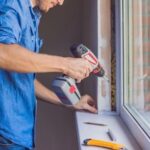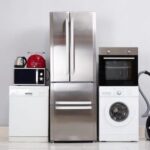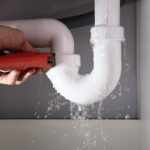
It’s important to have a homeowner’s maintenance checklist. Keeping a regular maintenance schedule for your home or rental can help you avoid more labor-intensive and expensive repairs down the line. What should you be looking at inside and outside your home on a consistent basis? Additionally, what is your responsibility as a landlord versus a tenant? Look over your lease agreement or HOA CC&Rs to see what you’re expected to maintain in and around your home.
Yearly Maintenance to Perform
You can carry out these home repair tasks yourself or hire them out, but be sure to give the following your attention each year.
- Pest inspection – Look for entry points throughout your home to see what you can do to prevent infestation. Additionally, consider hiring professionals to deter or eradicate pests.
- Drain water heater – Layers of sediment can build up in a water heater, causing it to lose efficiency. An annual drain of your water heater can increase its performance so you’re never surprised with a cold shower.
- Check HVAC filters – This task should actually be addressed monthly. HVAC filters can need changing as often as every 30 days. Check your HVAC system to see which is best for your home.
- Inspect for water damage – Periodically check your home for signs of water damage. If your rain gutters deposit water near the foundation of your house, you may want to look for signs of damage there.
- Clear rain gutters – You can avoid the potential for water damage by maintaining clean rain gutters. Every autumn and spring you should check for holes in your gutters, as well as debris.
- Sprinkler maintenance – Another way to prevent water damage is prompt sprinkler maintenance. Each winter, flush your lines and disconnect hose bibs to avoid burst pipes.
- Touch up tile grout and/or caulk – Keep your kitchen and/or bathroom tile looking pristine. Update grout and caulk each year. Whether you just clean your grout or reapply, it can help preserve the life of your tile.
- Test smoke and carbon monoxide detectors – For your safety, perform routine tests of your smoke and carbon monoxide detectors. Replace batteries or check hardwired systems as necessary.
Maintenance or Repair Every 10-15 Years
Usually, we don’t think of upgrading appliances or curb appeal until it’s time to try selling our home. Whether you’re in your forever home or are looking to get top dollar, ensure you’ve addressed the following in the last 10 – 15 years.
- Upgrade appliances – New kitchens are usually a great investment. You’ll tend to see a bigger return on your upgrades in this space compared to others. So, you’re encouraged to upgrade your refrigerator, range, dishwasher, and even your sink every decade or so. You can also benefit from a new sink faucet in the kitchen and/or bathrooms, as well as a high-efficiency water heater.
- House exterior – Depending on the materials used, your home’s exterior should be carefully inspected every 10 years. It’s recommended that exterior paint and siding are touched up or replaced no less than every 15 years. Of course, if your annual inspection of the exterior reveals problems, address those repairs as they arise.
Maintenance Every 20-30 Years
There’s not much in a home that will last 30 or even 20 years.
- Roof – If you’re lucky, your roof will give you 20 – 30 years of protection from the elements. This varies depending on the materials used and the climate they endure. And, of course, if you see signs of water damage in your attic or upper story, it could be a sign that your roof is ready to be replaced.
- HVAC – With annual inspections of your HVAC, you’ll be aware of when it’s time to replace the whole system. With routine maintenance, including replacing filters and cleaning vents, your HVAC system can keep chugging along for decades.
- The Best Ways To Reclaim Your Youth as a Senior - June 23, 2021
- Setting Your Repair Timeline for Your Home - May 26, 2021
- The Art of Confidence - May 15, 2021






